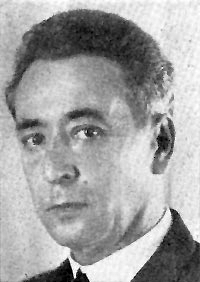Pierre Ryckmans
( civil servant) | |
|---|---|
 | |
| Born | 1891-11-23 Antwerp, Belgium |
| Died | 1959-02-18 (Age 67) Uccle, Belgium |
| Nationality | Belgian |
| Alma mater | Catholic University of Leuven |
| Religion | Catholic |
Governor-General of Belgian Congo for 12 years. Instrumental in bringing the colony into the war on the Allied side after Belgium's defeat in May 1940 -including the supply of uranium. Attended Bilderberg/1956.
| |
Count Pierre Ryckmans was a Belgian civil servant who was Governor-General of the Belgian Congo from 1934 to 1946, where he was instrumental in bringing the colony into the war on the British side after Belgium's defeat in May 1940 - including the supply of uranium to the US Manhattan Project. Attended Bilderberg/1956.
Education
Pierre Ryckmans was the sixth child of Alphonse Ryckmans (1857-1931), senator for the Catholic party, and Clémence Van Ryn. He studied law and art history at the Université Catholique de Louvain.[1] He became a war volunteer and fought in the First World War, and took part in the fighting in Cameroon (1915-1916) and in East Africa (1916-1918), where it was Belgian troops who captured the German colonies of Rwanda and Urundi, which as a result were assigned to Belgium by the League of Nations as a mandate territory.
Career
Pierre Ryckmans remained in Africa after the First World War and embarked on a colonial career in the Mandate territory assigned to Belgium. He returned to Belgium in 1921 to marry Magdalena Nève De Mévergnies (1891-1989), with whom he had eight children.[2]
After returning to Belgium in 1928, he established himself as a lawyer. From 1929 he also taught at the Colonial College of Belgium in Antwerp and at the Université Catholique de Louvain.
In 1934 he was appointed president of Ineac, the National Institute for the study of Agriculture in the Congo. Somewhat unexpectedly, the same year he was appointed governor-general of the Belgian Congo and Rwanda-Burundi.[2]
Two important dossiers awaited the new governor-general. The economic depression of the 1930s had hit the Congolese export economy immensely and resulted in a decline in the number of Belgians in the colony. In addition, there were the still undigested consequences of the administrative reform of 1932, which had curtailed the power of the provincial governors, causing great discontent in Katanga, among others.[2]
At the outbreak of the Second World War, Ryckmans played a decisive role by, after the capitulation of King Leopold III, without delay, even before the Belgian government had joined the Allied camp, siding the Belgian Congo on the side of the British.[3] The relationship between Ryckmans and the minister of colonies, Albert De Vleeschauwer, was sometimes tense.
During the war, a veritable production battle was unleashed at the service of the Allied war industry. After the loss of the Malayan rubber plantations to the Japanese in 1942, the Belgian Congo grew into a strategic supplier of rubber. The uranium used in the American atomic bombs dropped over Hiroshima and Nagasaki in August 1945 came from the Shinkolobwe uranium mine in Katanga.
The war effort took a heavy toll, especially on the native Congolese population. In December 1941, bloody riots broke out in Elisabethstad. This was also the case in Luluaburg in 1944. Among the repressive measures taken by Ryckmans was the establishment of agricultural labour camps where "administrative detainees" lived with their families and they were sometimes subjected to torture and disappearances.
From 1947 to 1957, Pierre Ryckmans represented Belgium at the decolonization committee of the United Nations in New York.[4], where he defended the so-called "thèse belge", against the anti-colonial lobby led by the United States and the Soviet Union.
In 1952, in the form of a non-profit association, he founded the Belgian Nuclear Research Centre, which would play an important role for Belgium's presence in the development of nuclear energy.[5]
In 1962, Ryckmans was posthumously granted hereditary peerage with the title of Count, transferable at first birth. His son André Ryckmans, who was killed in the Congo on 17 July 1960, was also posthumously awarded the title of Count, also transferable at first birth.
Event Participated in
| Event | Start | End | Location(s) | Description |
|---|---|---|---|---|
| Bilderberg/1956 | 11 May 1956 | 13 May 1956 | Denmark Fredensborg | The 4th Bilderberg meeting, with 147 guests, in contrast to the generally smaller meetings of the 1950s. Has two Bilderberg meetings in the years before and after |
References
- ↑ https://www.humanities.org.au/wp-content/uploads/2017/04/AAH-Obit-Ryckmans-2014.pdf
- ↑ Jump up to: a b c https://www.kaowarsom.be/en/notices_ryckmans_pierre_maria_joseph
- ↑ https://archive.md/20130204111638/http://www.time.com/time/archive/preview/0,10987,765010,00.html
- ↑ https://digitallibrary.un.org/record/859979?v=pdf
- ↑ https://web.archive.org/web/20070927025324/http://www.sckcen.be/sckcen50/uk/brochure/screen/BrochureSCK50_UK.pdf